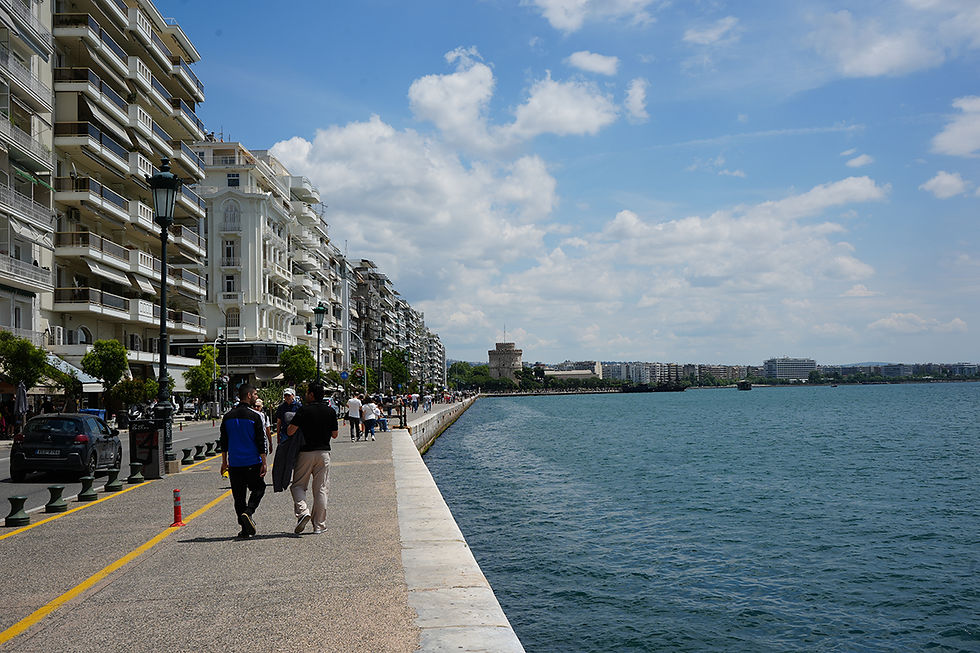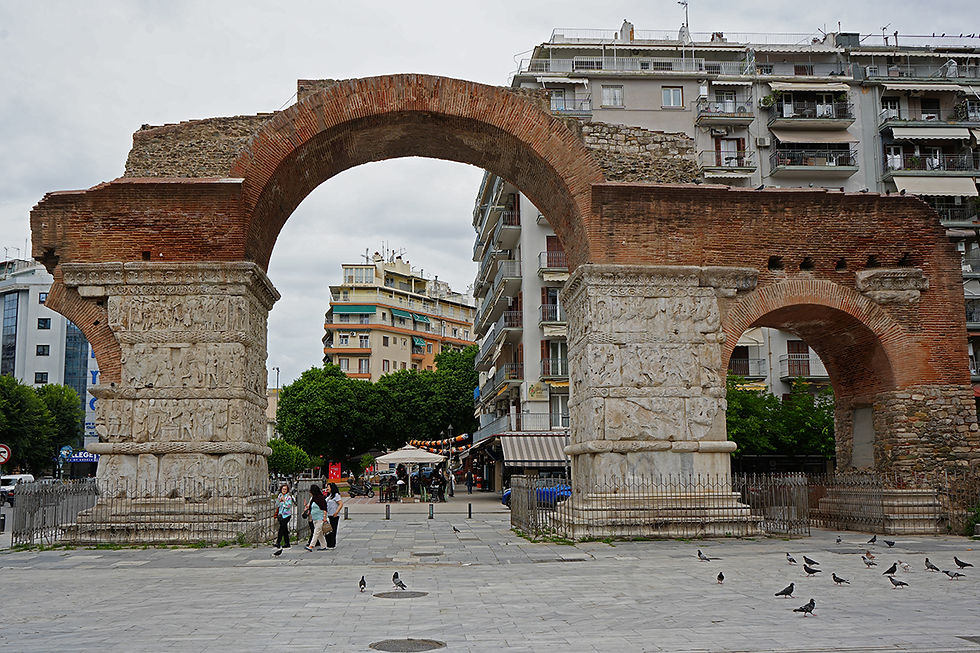The Grand Arc
- lavieenroute
- Jun 22
- 3 min read
There are cities that immediately captivate travelers with their splendor. There are cities that are prominent and practical transportation hubs. Or particularly trendy. And then there is Thessaloniki.
Thessaloniki does not really fit into any of those categories. At first glance, it seems a bit rough around the edges. Southern, without a doubt. By the sea, but without a beach in the city. Loud. With a lot of utilitarian architecture and interspersed ancient structures that sneak into the picture much more subtly than in Athens. The second-largest city in Greece is a grand arc. Literally, as the city center curves directly along the water. Historically, too, as Thessaloniki spans the arc from antiquity to modernity in an absolutely natural, unpretentious way.
Where the city suddenly becomes the sea: beach promenade in Thessaloniki.

We begin our exploration right at the bustling and well-trodden waterfront promenade. It stretches for several kilometers along the sea and passes by the iconic White Tower, the unofficial landmark of the city. The view of the waiting cargo ships, the seagulls, the gradually filling Aristotelous Square – Thessaloniki is a bit like a film in slow motion. Just louder.
Thessaloniki was once a Roman power center, an Ottoman hub, a Byzantine center – and you can feel all of that. Even today, between plain concrete buildings, Roman triumphal arches and agoras, Orthodox churches, or the birthplace of Kemal Atatürk suddenly appear.
Just like that: bridging the arc from antiquity to modern times.

In the middle of the city, a visit to the Modiano Market is worthwhile. After extensive renovation a few years ago, this covered marketplace is a mix of traditional stalls and trendy locales. Stalls for fish for humans and cats, spices, cheese, meat, olives, and tablecloths alternate with wine bars, street food stands, and cozy cafes.
You can immediately see the diversity of the northern Greek port city on the plate. Of course, the classics of Greek cuisine are very common – but the influences from the Balkans and Turkey are unmistakable. Important: Something like "too much olive oil" is rather unspeakable in this part of the country.
So what do you do with this port city, this amalgam of concrete, history, religion, culture, and traffic? The best thing to do is to take it slow, enjoy the moment, and try to take as much of Thessaloniki home with you as possible.
Hope on the fish market.

You can't help but keep looking at the water. So we walk along the promenade once more. Ice cream in hand, salty air in the nose, music somewhere in the background. No, Thessaloniki is not a postcard city – fortunately. Instead, it is absolutely real, unfiltered, and largely spared from overtourism. And that is precisely why it is definitely worth a visit.
Good to know
From Zurich, Thessaloniki is about a two-hour flight away. If you want to travel by car overland, you need to plan around 20 hours of pure driving time. The journey by train and bus, usually via Bulgaria, takes around 30 hours.
As a big city, Thessaloniki also offers a full range of accommodations. We chose to stay directly on the waterfront promenade: The On Residence, a wonderfully old building by the sea, did not promise too much of a view. You can see the sea from the bed, but you pay for it with a lot of noise – caused by traffic on the waterfront promenade and the hotel's own rooftop bar.
The absolute highlight of Thessaloniki is the cuisine. Practically every street in the city center has inviting places, but these restaurants particularly stood out to us:
The Rouga: The restaurant is spread over a car-free little alley – which may look a bit touristy at first glance, but is very cozy with friendly service and genuine Greek cuisine;
Savvikos: There are three branches of this grill restaurant in the city center – fast, simple, and fresh;
rOOTS: Greek cuisine in a vegetarian style – sensational!



Comments